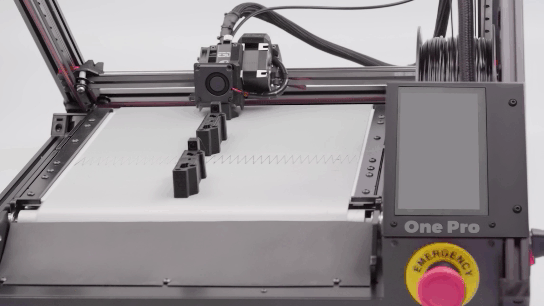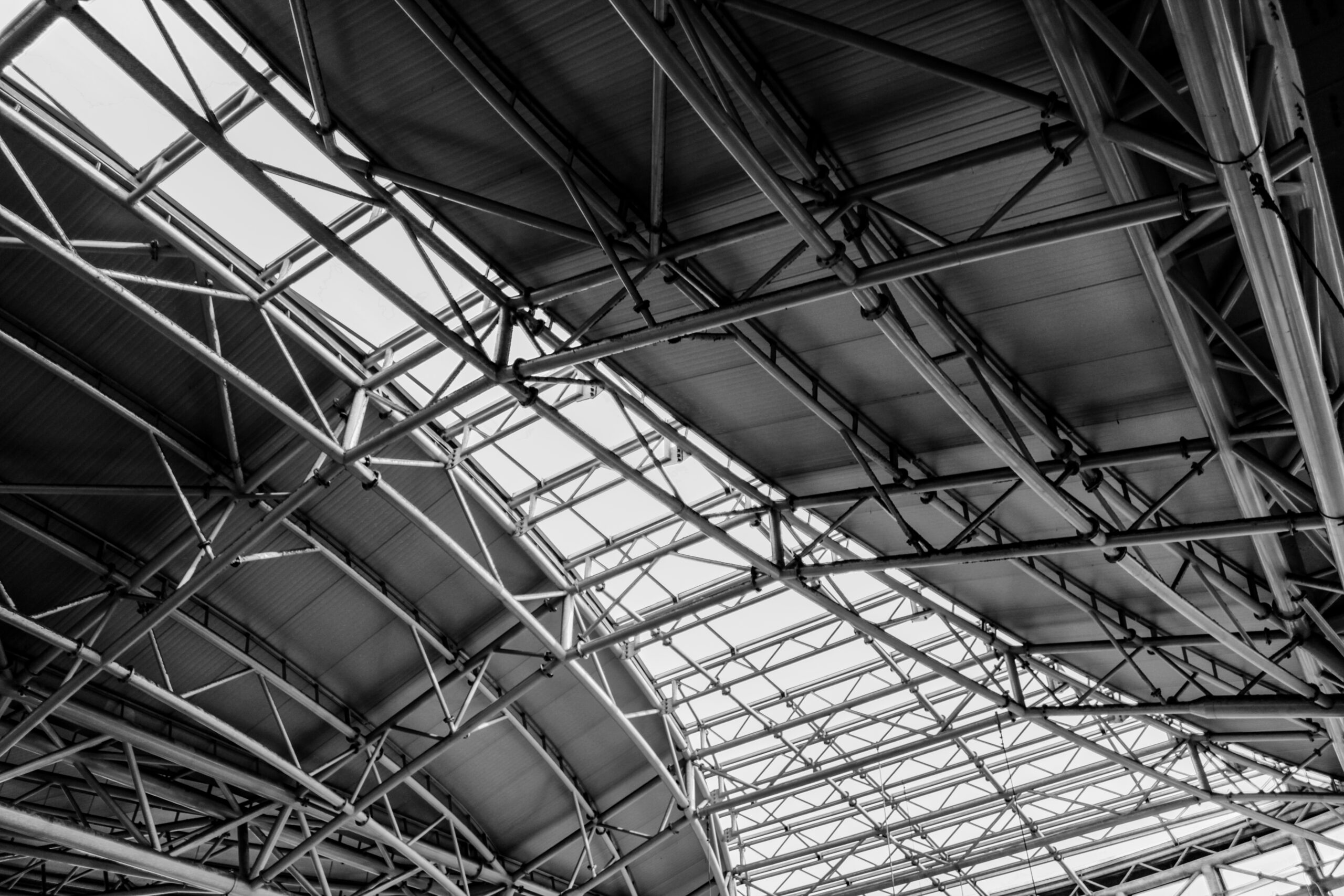In the world of construction, efficiency is the name of the game. This also applies to Siegerland, a German region with a proud tradition of craftsmanship. Even for companies and businesses with a long tradition, it is important to adapt to changes in the market and keep an eye out for future-oriented technologies. A traditional company from the region has found a way to optimize its production with the help of innovative technology and generate process reliability. First with the help of classic additive manufacturing in the form of 3D printers. And now they were ready for the next stage: automated additive series production thanks to conveyor belt technology from iFactory3D.
The challenge of roof construction
For reasons of durability and stability, roof structures are in fact still mostly made of metal, aluminum and steel in complex and sometimes very labor-intensive manufacturing processes. To increase efficiency, auxiliary materials made of plastic are also used for less stressed areas. The quality of these mechanical lock and support structures is now sufficiently high that they can be used without hesitation. It has also been possible to adequately install and thereby test such constructions from 3D printers in recent years. The technology of 3D printers has been evolving in the market over the years. Thus, it is not uncommon for 3D printers to be used in craft businesses for the production of precise and specific objects. So the company from the Siegen area has also oriented itself in the direction of additive manufacturing.
The step to additive manufacturing
To increase efficiency, the company decided to use 3D printers in the Fused Filament Fabrication (FFF) process. Over the years, more and more parts were manufactured in-house using additive manufacturing. Thus, over time, a small printing fleet was created. Starting with typical hobby equipment, more sophisticated B2C models were quickly acquired. While production was adapted to 3D technology, this very technology continued to evolve and newer generation printers with advanced features were gradually added to the print farm. Two higher-priced B2B printers also made it into the inventory as the independent manufacturing approach paid off for the company. These printers, now eight in number, helped automate some steps in the manufacturing process and significantly speed up the production of fastening mechanisms.
The challenges of traditional 3D printers
However, the optimal execution of the manufacturing processes requires a lot of expertise and experience, and the application of additive manufacturing also takes a lot of labor time. From creating the models, to optimizing the material profiles for the slicer, to slicing the models to fit the printer. That’s just the preparation. For a successful print result, the printing process usually has to be monitored and the print bed manually emptied after each printing process. Support structures on the model often have to be removed manually, and then everything has to be repeated for the next process.
And all these hurdles have to be taken individually for each printer model. Each 3D printer from different manufacturers has different functions and requirements. Also, the maintenance of so many models is intensive, and yet no real process reliability can be expected because so many parameters need to be taken into account for smooth production of several thousand printed parts per week.
The solution: the 3D printer with conveyor belt from iFactory3D
And process reliability is an important milestone that the long-established company was eager to achieve. The solution to these challenges in the jumble of capabilities and demands of the previous printers actually lay in the acquisition of another printer model: the iFactory3D 3D belt printer. This innovative 3D printer was specifically designed to increase production speed and improve efficiency by minimizing the need for human interaction. Once all the settings for a particular part have been made, the printed parts literally roll off the belt in identical fashion.
Put through its paces
To play it safe, the roofing company enlisted the services of iFactory3D. Before purchasing a printer, they commissioned test prints to simulate their weekly order volume. The result: iFactory3D’s print farm produced 1000 pieces of a clip model for fastening roof panels. The engineers at iFactory3D succeeded in optimizing the pure printing time to less than 4 minutes per part. Since hardly any other time has to be taken into account for belt printing, this results in a printing time of 100 hours, i.e. a little over four days, for 1500 parts. 24/7 operation is no problem for the belt printer. In the past, Cartesian models often required an employee to visit the factory on weekends to keep production running. As a result, a One Pro from iFactory3D reaches its weekly target after a maximum of 5 days and could still be used to capacity for a full 2 days.
Technology that convinces
After these clear results, the company purchased its own 3D belt printer and has been using it successfully ever since. The benefits of continuity are so great that plans are already underway to purchase another One Pro. This one alone will take over the production of another tool, which is calculated to take around 6 minutes per piece on the conveyor belt printer. Here, too, the company can call on iFactory3D’s expertise and have the desired 3D model perfectly matched to the printer. The minimal operation and maintenance of the two printers can be handled by one employee. The fact that they are the same model facilitates handling and ensures high process reliability. In the meantime, the Cartesian printers can be used for research and development and prototyping until a design is ready for series production again, and then it may be on to the next conveyor belt printer.
A look into the future
By using the iFactory3D belt printer, the Siegerland-based company has made a successful transformation. This innovative technology has not only increased process reliability and efficiency, but also strengthened the company’s competitiveness.
As pioneers in the industry, they demonstrate how the right choice of 3D printing technology paves the way for further innovation and improvement in the construction industry. With the iFactory3D conveyor belt printer, they have proven that innovation and tradition can go hand in hand to create high-quality solutions for the future.
The company from Siegerland is an inspiring example of how companies can use modern technology to revolutionize the way they work. We are excited to see how this success story will continue to develop and how iFactory3D’s conveyor belt printer will bring about even more positive changes.
 Serial production
Serial production
